Join More Than 50,000+ Subscribers and get latest camera news and rumors
NEW CAMERA VIDEOS ON YOUTUBE
|
By admin, on April 16th, 2025
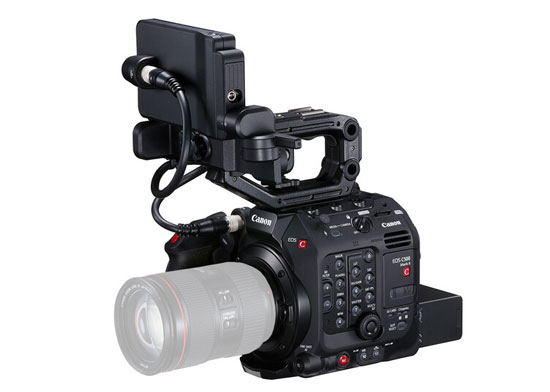
Canon C500 – The Canon cinema camera has a usable firmware update this time – Take a look at the list of improvements, if ur an owner and feel it’s important to have it, then only apply the updates
- Enables the digital tele-converter icon display on [Main Recording Displays] of [DISP Level 2].
- It adds the ability to apply a full-screen display to an external display according to the OSD output setting when using [Peripheral Border Display].
- Adds the [Motion Vector For Digital IS] menu option. Default [Disable]*.
*[Disable]: Prevents a phenomenon that may cause the image to shake along with the subject when recording a subject (such as a person or an animal) with a large amount of movement.
- Fixes minor issues.
- Fixes an issue in which aspect markers and other markers are not displayed correctly if the resolution of the video output configuration is set to [4192x3140 (4:3)] or [3768x3140 (6:5)] and the anamorphic desqueeze is applied.
Click here to download Canon C500 update

Sony A1 II, A1, and A9 III – Sony released a new firmware that includes minor bug fixes and a little bit of performance improvement. If you find them useful, then you can update it; otherwise, it isn’t a major performance-enhancing update
A1II Benefits and Improvements – Click here to download
- Fixes an issue where setting Recording Media to Sort Recording may cause a restart during still image capture
- Fixes an issue where the effectiveness of the Soft Skin Effect when recording movies in S-Log3 was not properly adjusted
A9III Benefits and Improvements – Click here to download
- Fixes an issue where setting Recording Media to Sort Recording may cause a restart during still image capture
- Fixes an issue where the effectiveness of the Soft Skin Effect when recording movies in S-Log3 was not properly adjusted
A1 Benefits and Improvements – Click here to download
- Fixes an issue where setting Recording Media to Sort Recording may cause a restart during still image capture
- Fixes an issue where the button registered with Recall Custom Hold may not be accepted
Follow us on our social pages FACEBOOK | TWITTER | INSTAGRAM to get live Camera News +
By admin, on April 15th, 2025
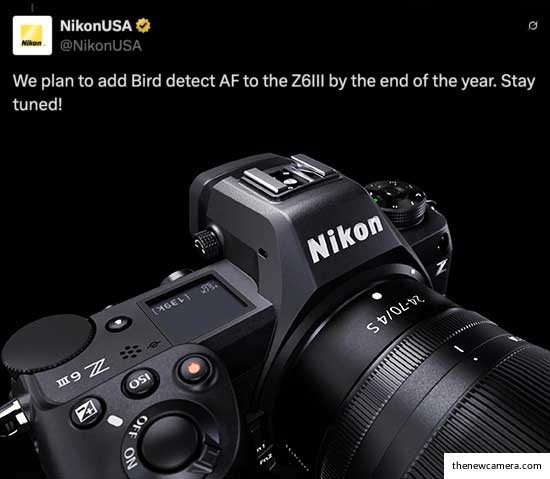
Today Nikon confirmed that bird eye autofocus mode is coming to the Nikon Z6 Mark III camera later this year in their social media post, that’s really great news since cameras like Nikon Z50 II, Z5II and Nikon Zf, which come at a lower price point than the Nikon Z6 III, now have bird eye autofocus mode. And Z6 III users are waiting for a long time to have it.
And we had reported back in November 2024 that Nikon is working on Z6 Mark 3 bird eye autofocus mode and they will roll it out as they are ready for it, and now we got the final confirmation from Nikon itself.
Best Lenses for Nikon Z6 III
Follow us on our social pages FACEBOOK | TWITTER | INSTAGRAMto get live Camera News +Nikon Rumors 24X7
By admin, on April 15th, 2025

Nikon Z5 II vs Sony A7 III – Let’s compare the two and find out the best, we have selected all the major difference between the two camera, starting from the desing part, and the the Major differences in the photography part of both camera,s and finally, the best camera for video.
In the Latest Nikon Z5 II, we have a deep rear hand grip and an enhanced display as well as an electronic viewfinder. The rear display screen in the Nikon Z5 II is a vari-angle display screen with higher resolution, so you can also create content/vlog with the camera, and photographers will have a bit more compositional freedom. The electronic viewfinder is of higher resolution and rated up to 3000 nits of brightness, helping to shoot perfectly in daylight conditions. The Nikon Z5 II design is slightly more professional and looks very similar to the Nikon professional Z6 III model. The battery life of the Nikon Z5 II is slightly limited so you have to carry an extra battery pack or a power bank with you.
| Aspect |
Nikon Z5 II |
Sony A7 III |
| Body Dimensions |
134 x 100.5 x 72 mm (Large handgrip) |
127 x 96 x 74 mm (Slightly small) |
| Weight |
700g (with battery, media) |
650g (with battery) |
| Grip & Ergonomics |
Larger, deeper grip with still/video switch, tactile dials |
Smaller grip, more custom buttons, compact layout |
| Build & Weather Sealing |
Magnesium alloy, weather-sealed (32 to 104°F, 85% humidity) |
Magnesium alloy, dust/moisture resistant (tropicalization) |
| Card Slots |
Dual UHS-II SD/SDHC/SDXC slots |
One UHS-II + one UHS-I SD slot |
| Display Size |
3.2-inch touchscreen |
3.0-inch touchscreen |
| Display Resolution |
2,100,000 dots |
921,600 dots |
| Display Type |
3-way tilting (up/down/side) vari-angle |
2-way tilting (up/down) |
| Touchscreen Functionality |
Full control (menus, focus, zoom) |
Limited (focus point, double-tap zoom) |
| Viewfinder Type |
Electronic OLED |
Electronic OLED |
| Viewfinder Resolution |
3,690,000 dots |
2,359,296 dots |
| Viewfinder Magnification |
0.8x |
0.78x |
| Viewfinder Eye Point |
21 mm |
23 mm |
| Battery |
1x EN-EL15c Lithium-Ion (~380 shots CIPA) |
1x NP-FZ100 Lithium-Ion (~610 shots CIPA) |
| Power Delivery |
USB-C input/output (live power during shooting) |
USB 3.1 (charging only) |
| Video I/O |
Micro-HDMI output |
Mini-HDMI output |
| Audio I/O |
3.5mm headphone, 3.5mm microphone |
3.5mm headphone, 3.5mm microphone |
| Other I/O |
3.5mm remote, USB-C 3.2/3.1 Gen 1 (data/power) and Multi-interface shoe |
Multi-interface shoe (remote/audio), USB 3.1 (data) |
| Wireless Connectivity |
2.4/5 GHz Wi-Fi 5 (802.11ac), Bluetooth 5.0 |
2.4 GHz Wi-Fi (802.11b/g/n), Bluetooth 4.1 |
| NFC |
None |
Included |
| Mobile App |
SnapBridge (Android/iOS, files/firmware/remote) |
Imaging Edge Mobile (Android/iOS, files/remote) |
| GPS |
Via smartphone (SnapBridge) |
Via smartphone (Imaging Edge) |

Internal Core specification of the camera
Both cameras use a 24-megapixel full-frame BSI CMOS sensor, but the Nikon Z5 II, with the help of new image processor features, has a standard ISO range of up to 64000 and expandable up to 204800, which is one stop more than that of the Sony A7 III.
Not only does it have a better ISO range, but the new Z5 II camera also uses a sensor-shift image stabilisation system of 7.5 stops. As we know, the A7 III is limited to 5 stops, so Z5 II will be helping you a bit more to capture low-light images while hand-holding this camera.
Adding more value to it, the autofocus sensitivity now can touch down to minus 10 EV, and in Sony, it is limited to minus 3. So, we consider all these factors — the Z5 II becomes a bit more suitable a camera to work with under variable light conditions.
Nikon Z5 II vs Sony A7 III – Photography Core Specs Comparison
| Aspect |
Nikon Z5 II |
Sony A7 III |
| Sensor Type |
24.5MP full-frame CMOS (6048 x 4032) |
24.2MP full-frame BSI CMOS |
| Sensor Crop |
1.0x (full-frame) |
1.0x (full-frame) |
| Image Stabilization |
5-axis sensor-shift IBIS(7.5 Stops CIPA) |
5-axis sensor-shift IBIS (5.0 stops CIPA) |
| ISO Sensitivity (Photo) |
100-64,000 (Extended: 50-204,800) |
100-51,200 (Extended: 50-102,400) |
| Autofocus Points |
273 phase-detection points |
693 phase-detection + 425 contrast points (93% coverage) |
| AI AF Type |
9 Different types of subject tracking include Bird eye AF |
Precise and better, but doesn’t have a dedicated bird eye AF mode |
| Autofocus Sensitivity |
-10 to +19 EV |
-3 to +20 EV |
| AF Modes |
Continuous-Servo, Full-Time Servo, Manual, Single-Servo |
Continuous, Manual, Single, Tracking |
| Specialized AF |
Bird/insect/vehicle + 9-subject AI detection |
Real-time Eye AF (human/animal) |
| Continuous Shooting |
14 FPS + 30 fps (Mech + electronic shutter) |
10 fps (mechanical/electronic) |
| Buffer Depth |
200 RAW frames @ 14 FPS |
~89 RAW at 10 fps |
| Shutter Type |
Mechanical focal plane + electronic rolling |
Mechanical + electronic front-curtain |
| Shutter Speed |
1/8000 to 30 sec, Bulb/Time modes |
1/8000 to 30 sec, Bulb mode |
| Metering Methods |
Center-Weighted, Highlight Weighted, Matrix, Spot |
Center-Weighted, Multi-zone, Spot |
| Metering Range |
-4 to 17 EV |
-3 to 20 EV |
| Exposure Modes |
Aperture Priority, Auto, Manual, Program, Shutter Priority |
Aperture Priority, Auto, Manual, Program, Shutter Priority |
| Exposure Compensation |
-5 to +5 EV (1/3, 1/2 EV steps) |
-5 to +5 EV (1/3, 1/2 EV steps) |
| White Balance |
Auto, Cloudy, Color Temp, Sunlight, Flash, Fluorescent, Incandescent, Manual, Shade |
Auto, Cloudy, Color Temp, Custom, Daylight, Flash, Fluorescent, Incandescent, Shade, Underwater |
| Image File Formats |
HEIF, JPEG, RAW (14-bit) |
JPEG, RAW (14-bit) |
| Aspect Ratios |
1:1, 3:2, 16:9 |
3:2, 16:9 |
| Interval Recording |
Yes |
No |
| Self-Timer |
2/5/10/20 sec delay |
2/5/10 sec delay |
| Flash Sync Speed |
1/200 sec |
1/250 sec |
| Flash Compensation |
-3 to +1 EV (1/3, 1/2 EV steps) |
-3 to +3 EV (1/3, 1/2 EV steps) |

Autofocusing mode
The new Z5 II features the same AI AF algorithm that we have seen in the Nikon Z8 camera and uses 9 different types of subject detection algorithms. While shooting a scene, it automatically detects a subject, focuses on their eye, and keeps tracking them.
So overall, the autofocusing experience of the Nikon Z5 II camera has been upskilled like a professional Nikon mirrorless camera.
The Sony A7 III does have a very strong eye autofocus and tracking mechanism, but it does lack a multiple subject detection mode or AI AF in it since it’s a 2018 model. Expecting too much from it isn’t good. Although it has a higher number of autofocus points, it does focus very well.
Continuous shooting speed:
The Nikon Z5 II camera is now able to capture 14 frames of RAW with the help of a mechanical shutter and up to 30 frames of full-size JPEG images. The camera also supports a pre-capture function, highly suitable for sports and wildlife shooters, that stores 30 30-FPS bursts before you press the shutter.
And the good thing is that the Nikon Z5 II refreshes its AI autofocus and auto exposure in every single frame, even if you are using it at 30 per second.
The Nikon Z5 II is also a highly reliable camera, but it remains limited to 11 frames per second. The Z5 II now becomes a perfect option for sports or wildlife photographers, anyone who loves to capture as many frames as possible of their favourite moment.
Nikon Z5 II vs Sony A7 III -Video Core Specs Comparison
| Aspect |
Nikon Z5 II |
Sony A7 III |
| Internal Recording Modes |
4K (3840 x 2160) at 23.98/25/29.97/50/59.94 fps; 1080p at 23.98/25/29.97/50/59.94/100/120 fps |
4K (3840 x 2160) at 23.98/25/29.97 fps; 1080p at 23.98/25/29.97/50/59.94/120 fps |
| Sensor Crop (4K) |
DX crop at 4k 60p |
NA |
| Internal Recording |
12-bit NRAW Video, 4:2:2 10-bit internal recording, 4K up to 29.97 fps |
8-bit via HDMI, 4K up to 29.97 fps |
| Video Profiles |
H.265, H.264/MOV/MP4 (N Log ) |
H.264, S-Log2/3, HLG |
| Recording Limit |
2 hr 5 min |
~29 min (pre-firmware) |
| Audio Recording |
24-bit 48 kHz (MOV/RAW), 16-bit 48 kHz (MP4) |
16-bit 48 kHz |
| Built-In Microphone |
Stereo |
Stereo |
| Fast/Slow-Motion Support |
None (1080p/120 fps max) |
None (1080p/120 fps max) |
| Streaming |
Yes / Upto 4K |
None |
Video comparison
In video, it’s very clearly visible in the table also that the Sony A7 III camera remains limited to 8-bit internal recording and even it has a time limitation of 30 minutes, whereas in the Nikon Z5 II camera we can record 4:2:2 10-bit internal recording at the rate of 4K 60 frames per second. But while recording at 60 FPS, we have to face DX crop, and when we are recording 4K 30 FPS, we are getting high-quality oversampled footage from the sensor.
Not limited to that, with higher quality video recording capability, you also get more stable footage due to the new 7.5 stops of IBIS mechanism, as well as integrated EIS compared to 4.5 to 5 stops of IBIS of the Sony A7 III.
Conclusions
Overall, for wedding cinematographers, content creators or professional cinematographers, the Nikon Z5 II is more usable in terms of specs when compared to the Sony A7 III.
Now, considering all these major factors, for sure, for a photographer, the Nikon Z5 II camera is now more suitable to use in comparison to the Sony A7 III camera. If Sony wants to beat the Z5 II. Sony needs to bring a perfect replacement for the A7 III camera. Either they should bring out the A7 IIIA or they should lower the price of A7 IV to an extent that users can buy it instead of the Nikon Z5 II.
Nikon Z5 II vs Nikon Z6 II | Nikon Z5 II vs Canon R8 | Nikon Z5 II vs Nikon Zf | Nikon Z5 II vs Sony A7 III
Get the Nikon Z5 II camera from B&H Store | Adorama.com | Amazon.com
Support us – Use or affiliate link Amazon.com | B&H Store | Adorama.com for the next purchase u make – it helps us 🙂
Follow us on our social pages FACEBOOK | TWITTER | INSTAGRAM to get live Camera News + Nikon Rumors 24X7
By admin, on April 15th, 2025
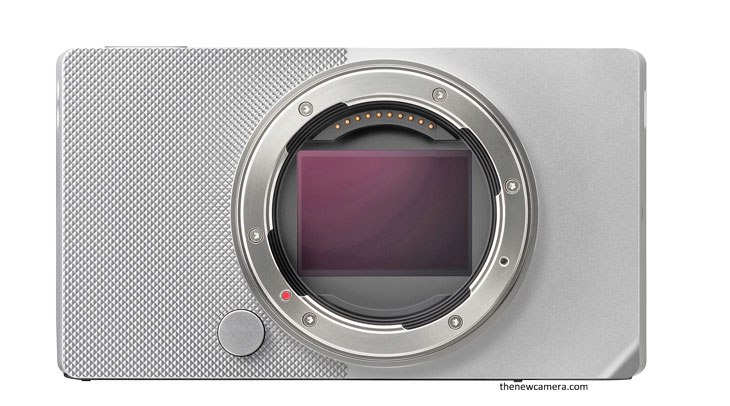
Official Announcement: SIGMA BF Cameras in Short Supply. Recently, Sigma’s official announcement came, stating that due to the pre-order volume of their BF cameras far exceeding expectations, they are currently in a state of short supply. Customers who place orders now may have to wait a little longer to receive their products.
As per the latest Petapixel report, Sigma can only make nine BF cameras per day as per their current capacity of making BF cameras. which is an extremely low level, so it’s a usual thing that it will always remain short in supply always till they upsacle their production line.

See more about BF – Sigma BF Camera: Revolutionary Tech or a Total Letdown? Find Out Now!
By admin, on April 15th, 2025
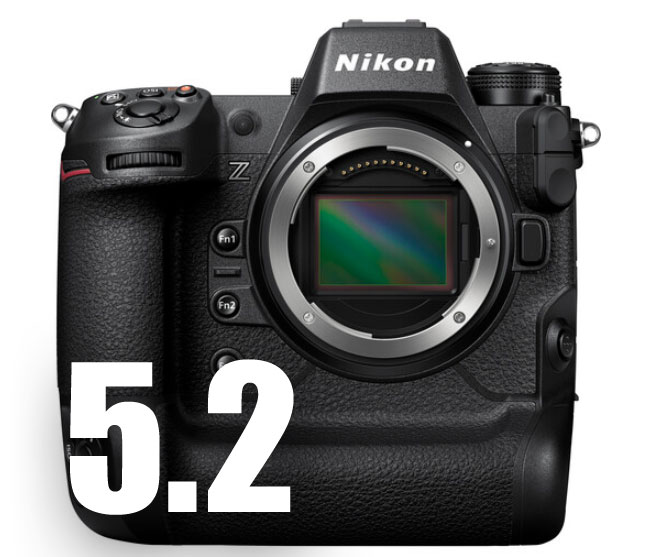
Nikon Z9 Firmware 5.2 Released in China and japan, and I hope and expect it will become available to other countries soon. Take a look at the details of the update
Translated version of the same
- • Now supports the “NX Field”* function, a remote photography system for businesses.
- * For an overview of NX Field and instructions on how to use NX Field, please visit the NPS website.
- NPS (Nikon Professional Services) website (English)
- *The smart device app “NX Field” is not available in some countries and regions.
- • The following bugs have been fixed:
- – In rare cases, when pressing the playback button after repeatedly shooting continuous shots, not all images would be displayed correctly.
- – In M mode, when taking continuous shots after changing the exposure, the exposure would occasionally be incorrect.
- – When a camera with the following settings is used as a linked release remote camera, the AF on the remote camera will be activated when the master camera’s shutter is pressed halfway.
- ▸ [Customization Menu] > a6 [Half-press AF lens activation] set to [Off]
[Custom Setting Menu]>a6 [Half-Press Shutter Drive AF]> [AF-ON Button Only]

What Is Nikon NX Field?
For those who don’t know about NX Field, the Nikon NX Field is a professional-grade remote shooting app from Nikon currently available for iOS apps for iPhones and iPads, first launched in June 2021, designed for agencies and pros to cover any event or game with multiple cameras flawlessly
- Control up to 10 cameras (one master, nine remotes) via wired LAN, wireless LAN, or 4G/5G networks.
- Adjust settings remotely, from autofocus to exposure, using the NX Field app on a smartphone or tablet (iPhone 8 or later, iPad Pro 2018+).
- Transfer images instantly to FTP servers for rapid publishing—crucial for newsrooms and sports agencies.
- Sync shutters for multi-angle shots, perfect for capturing that game-winning goal from every perspective.
Added support for enterprise users’ “NX Field” remote shooting system. Take a look at the features of the NX field software that you can do with your app
- Realizing shutter release, setting changes, and FTP image transmission of up to 10 remote cameras synchronized with a master camera via wired LAN cable.
- Wired LAN connection ensures reliable remote camera shutter release even in situations where many photographers are shooting with remote cameras via radio waves at once.
- Synchronization is also compatible with Wi-Fi connection using WT-5/6 Wireless Transmitters.
- The status of remote cameras, including connection status, latest shutter-release time, etc., can be confirmed from a master camera in order to avoid unintended errors.
- A smart device with the NX Field application installed can be used to change settings and check live view images of remote cameras, allowing for operation in narrow spaces or remote shooting from a distant location.
- Automatic FTP image transmission during synchronized shooting of a master and remote cameras as well as while changing camera settings via a smart device with the NX Field application.
- Easy recovery from FTP server network errors by remotely reconnecting to the server.
- Easy switching between shooting with a master camera only, with remote cameras only, or with both the master and remote cameras, which helps to avoid capturing unnecessary images and ensures that only the desired images are transferred.
- Autofocusing is possible with remote cameras from a master camera or smart device with the NX Field application.
- Remote shooting via the Internet, such as 4G/5G mobile network, is possible.
- The robotics of Mark Roberts Motion Control Limited can also be synchronized with a master camera.
- Silent remote shooting with compatible Z series cameras* for expanded shooting scenarios.
The content is updated on April 15, 2025
Follow us on our social pages FACEBOOK | TWITTER | INSTAGRAM to get live Camera News + Nikon Rumors 24X7
source Nikon Japan www.maging.nikon.com/imaging/lineup/software/nx_field/
By admin, on April 14th, 2025

Getting lots of comments and DM related to the Sony 11mm F1.8 Lens alternative, since users are not able to find this lens in online stores like B&H Store and Amazon.com, although it is still available on Adorama.com
The Nearest best lens and a better alternative to the Sony 11mm F1.8 Lens is the Viltrox 13mm F1.4 available at the B&H Store
Follow us on our social pages FACEBOOK | TWITTER | INSTAGRAM to get live Camera News 24X7
By admin, on April 13th, 2025
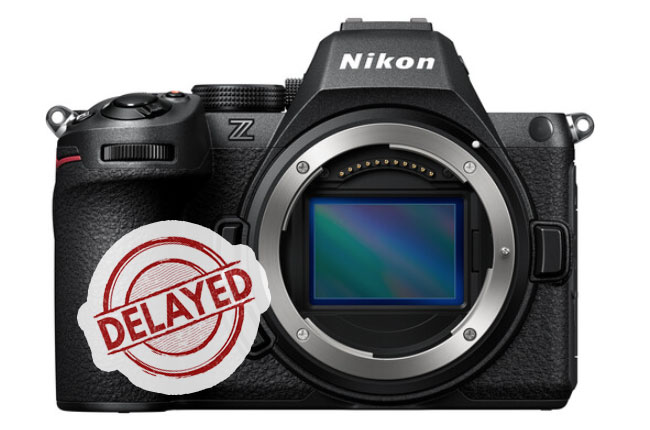
Nikon Z5 II is in very high demand. Japanese online stores that are taking pre-orders for the camera have already mentioned that they are getting an excessive number of pre-orders than they expected.
We are currently receiving many more orders for this product than we anticipated, so it may take some time for your order to be delivered. Thank you for your understanding.
In US the camera is expected to start shipping from April 24, 2025. Get the Nikon Z5 II camera from B&H Store | Adorama.com | Amazon.com
We have already done several comparison reviews of the Nikon Z5 II camera, you can check them out here.
Nikon Z5 II vs Nikon Zf
Nikon Z5 II vs Canon R8
Nikon Z5 II vs Nikon Z6 II
As I write this article, Nikon has not received any official statement regarding the shortage of supply of the Nikon Z5 II camera, but I think they will once they face the huge demand after April 24. Retailers will deliver on a first-come, first-served basis.
Follow us on our social pages FACEBOOK | TWITTER | INSTAGRAM to get live Camera News + Nikon Rumors 24X7
source nij.nikon.com
|
KEEP THIS BLOG ALIVE - Support New Camera Buy Canon Lenses, Buy Music CD or Digital Camera at amazon it helps this site, and you do not pay anything extra, it is just a way to help support this site.

|

















